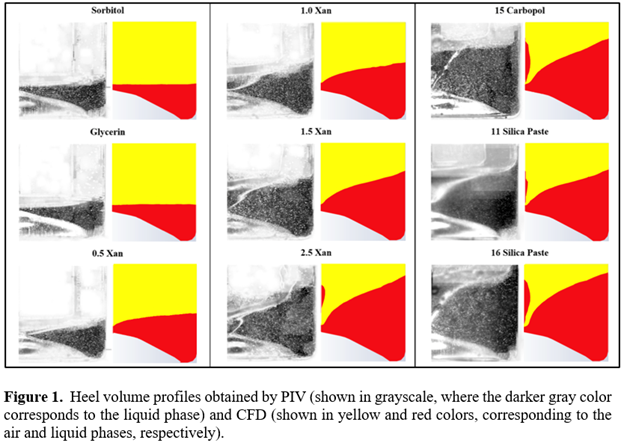(328e) Residual Heel Volume during the Pressure-Driven Discharge of Complex Fluids from Consumer Dispensing Bottles
AIChE Annual Meeting
2023
2023 AIChE Annual Meeting
Engineering Sciences and Fundamentals
Complex Fluids I
Tuesday, November 7, 2023 - 9:00am to 9:15am
Complex fluids for consumer use, such as liquid soaps, creams, lotions, and others, are often discharged from consumer bottles. In many instances, this process results in heel formation, i.e., the ultimate residual amount of fluid left the container. In this work, we investigated the fluid rheology effect on heel formation in a commercial hand pump bottle containing different complex fluids and including humectants, gels, and pastes. CFD was used to simulate the flow of fluids whose rheology was based on the Carreau equation, resulting in the prediction of the heel volume. These results were validated using weight measurements to quantify the volume of fluid left in the container and, separately, with an imaging method based on the use of PIV. All these results were in good agreement, as shown in Figure 1. The effective yield stress at a predefined level, and, separately, the apparent viscosity ηapp at a given shear rate value were found to be the critical parameters to predict the heel volume.

